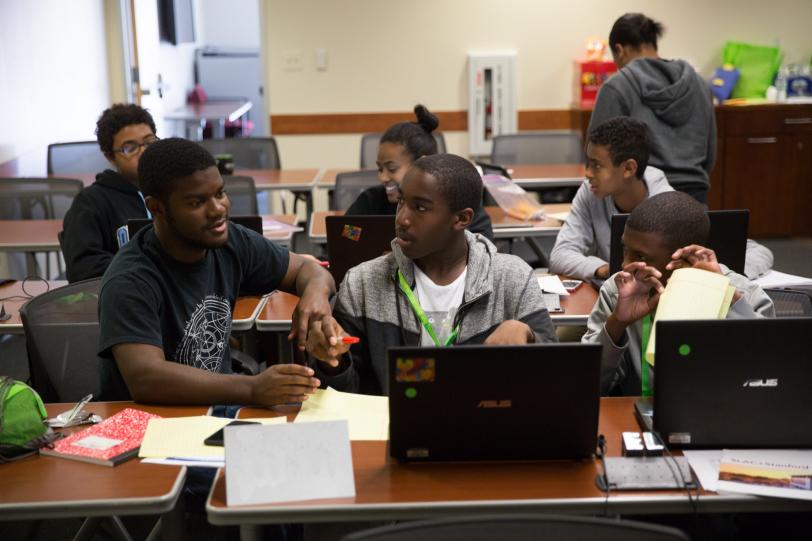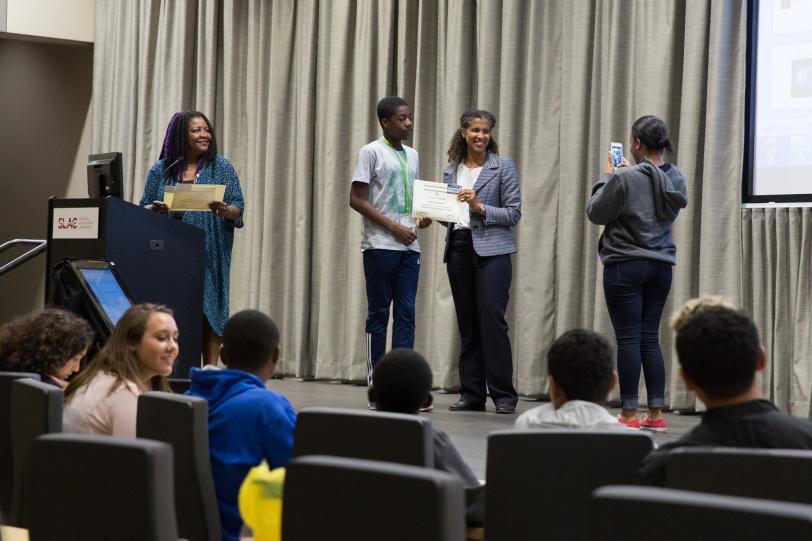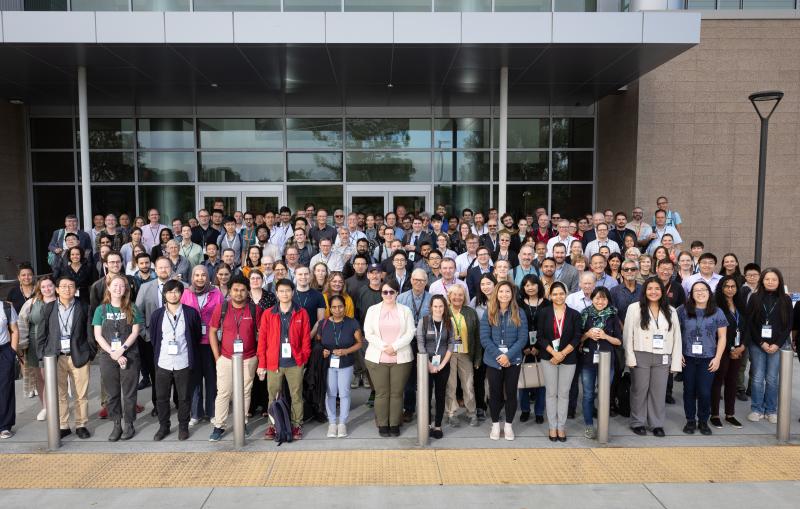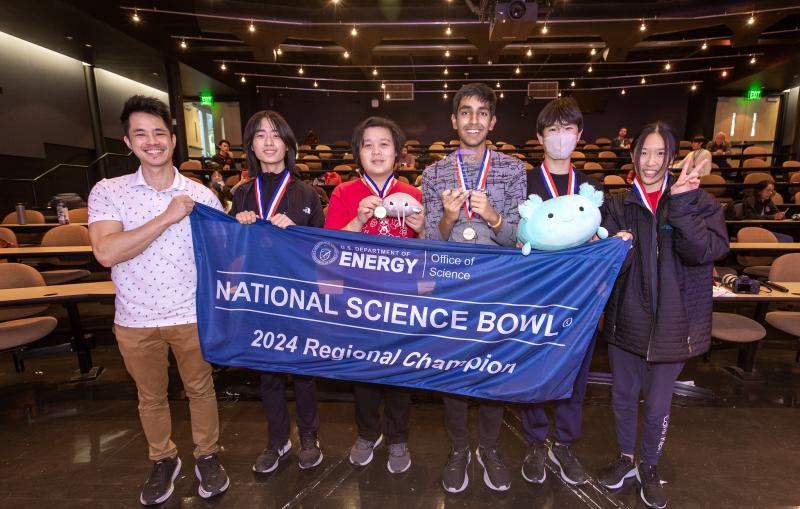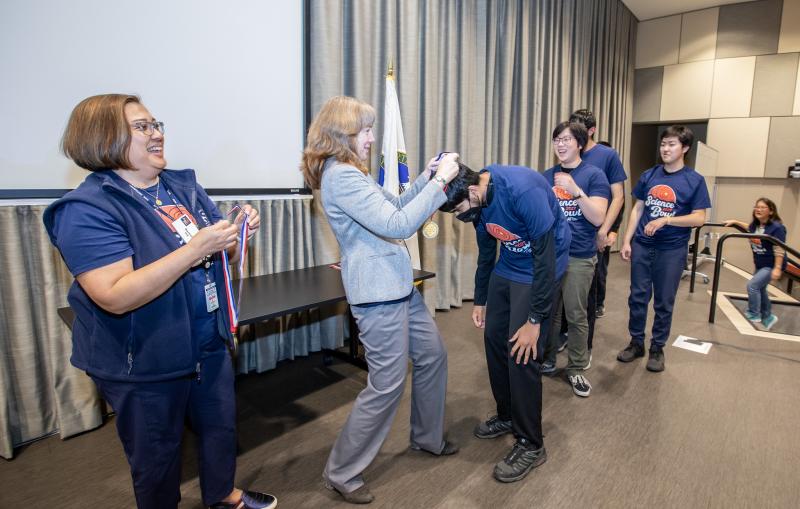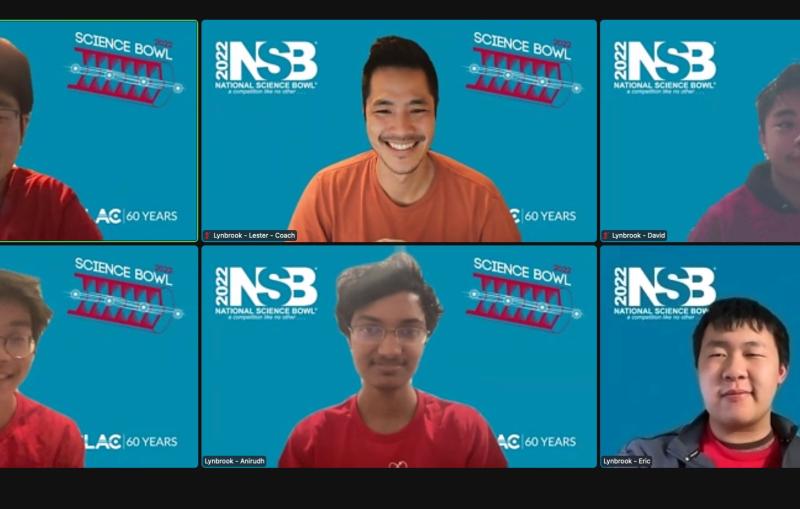Greene Scholars Explore Science and Engineering at SLAC
Science-interested teens spent a week at the lab learning more about STEM at the inaugural Greene Scholars Program Summer Science Institute at SLAC.
Jaden Morgan, a 13-year-old rising freshman who will attend Bellarmine College Preparatory in San Jose this fall, had heard about SLAC's legendary 2-mile-long accelerator but had never been to the lab. This summer he had the chance to see the Department of Energy's SLAC National Accelerator Laboratory facilities up close and hear how they are used to explore the world at the level of atoms and molecules.
"I learned a lot about engineering and physics done at the accelerator, and it opened my eyes to future job opportunities in those fields," he said. He was especially excited about science done with SLAC's X-ray laser after touring the Linac Coherent Light Source, a DOE Office of Science User Facility.
Morgan was part of a group of science-curious teens who recently spent a week touring the lab, learning about careers in science and engineering and enjoying hands-on science activities in subjects like cosmology and magnetism. Fourteen students ages 13 to 17 participated in the inaugural California Alliance of African American Educators Greene Scholars Program Summer Science Institute at SLAC, which was organized by an employee resource group known as CORE (Committee for Outreach, Recruitment & Engagement of Ethnic Minorities) in collaboration with Stanford University.
Ayodele Thomas, Greene Scholars Program director and assistant dean for diversity programs, data and technology at the Stanford School of Humanities and Sciences, emphasized the unique opportunity for Greene Scholars to spend time at a national laboratory. Students are often exposed to science, technology, engineering and mathematics (STEM) in the context of the high-tech industry, she said, so interacting with scientists who have advanced training in physics is rare.
"We were all excited to come to SLAC," Thomas said. "Many people have heard about it, but to experience it the way the students did over the course of a week is a once-in-a-lifetime opportunity."
Greene Scholars Program Manager Gina Hendy said that while the week covered a variety of topics, a special theme was the difference between science and engineering – both strong fields at SLAC.
The CAAAE Greene Scholars Program was founded in 2001 and promotes STEM enrichment programs among African-American youth in the Bay Area. The program is named after Frank S. Greene, an early Silicon Valley tech pioneer.
With support from the lab's management and Human Resources Development and Services, CORE worked with the Greene Scholars Program to establish the summer institute at SLAC.
“The CORE team at SLAC constructed an engaging learning week for the Green Scholars,” said Maryann Baumgarten, Diversity and Inclusion lead at SLAC. “These employees not only help build an inclusive culture at the lab, but they are also helping build the next generation of great scientists and engineers.”
Throughout the week, SLAC staff gave a variety of presentations to the students on scientific and leadership topics and assisted with lab sessions and tours. The institute culminated in presentations prepared and presented by the Greene Scholars at SLAC's Panofsky Auditorium on a range of subjects such as "Cosmology," "The Magnetic Kick Lab," "Modeling X-ray Diffraction in the Classroom," and "What is the Diameter of a Human Hair?"
Sean Kalsi, a CORE member who works on the SLAC accelerator operations team, said, "The smiles on the kids’ faces at the end of the week was proof they really enjoyed themselves during their time at the lab. Reaching out to our local communities is a critical step in ensuring we are planting the seeds necessary to help the U.S. meet the growing need for STEM workers in the future. "
Hendy said interactive experiences with science and technology make a lasting impression on the scholars.
"Young minds are fascinated by science and innovation when they can actively participate in discovery. The richer the experience, the more lasting the takeaway, and SLAC provided such a unique opportunity for our scholars to meet and work alongside some of the best, brightest scientists," she said. "As students practice science and engineering in collaborative and interactive ways, the subject matter becomes relevant and fun, sparking the beginning of a lifelong interest."
At the close of the week, the Greene Scholars wrote thank-you notes to the lab and to institute volunteers. Many expressed appreciation for those who led tours and lab activities.
"I learned a lot just being here," wrote scholar Jacquelyn Jones, a rising sophomore at Milpitas High. "I had a great time, and I hope I can come back."
Contact
For questions or comments, contact the SLAC Office of Communications at communications@slac.stanford.edu.
SLAC is a multi-program laboratory exploring frontier questions in photon science, astrophysics, particle physics and accelerator research. Located in Menlo Park, Calif., SLAC is operated by Stanford University for the U.S. Department of Energy's Office of Science.
SLAC National Accelerator Laboratory is supported by the Office of Science of the U.S. Department of Energy. The Office of Science is the single largest supporter of basic research in the physical sciences in the United States, and is working to address some of the most pressing challenges of our time. For more information, please visit science.energy.gov.
